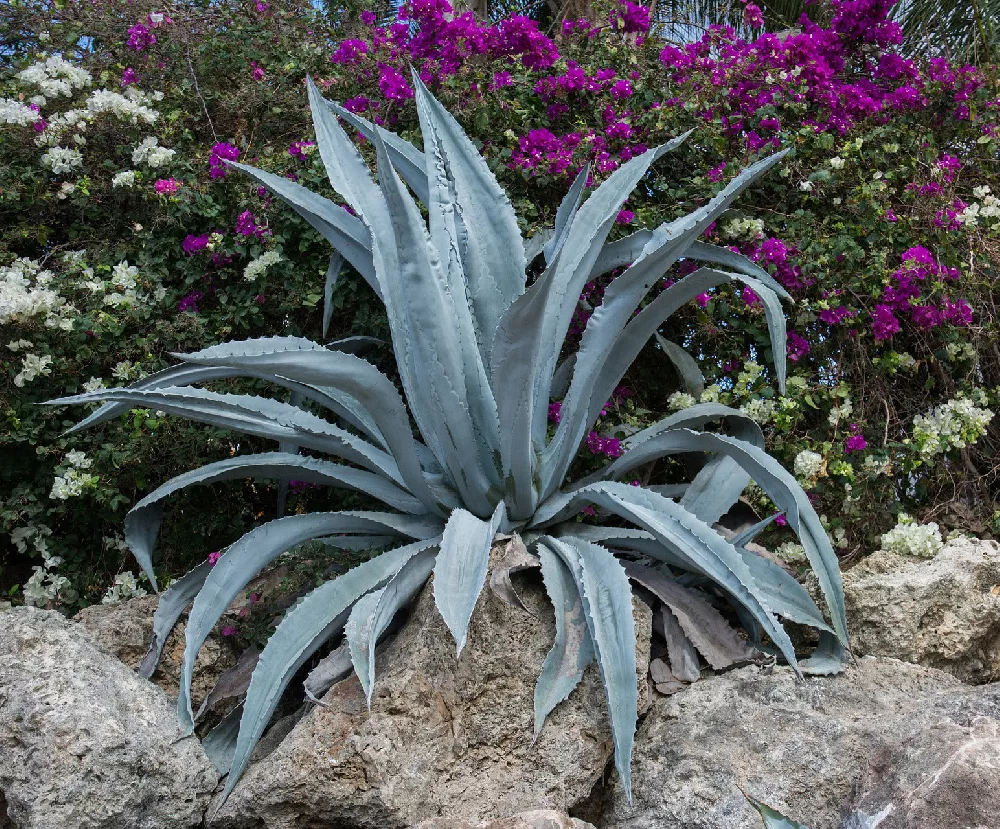- Home >
- Houseplants >
- Succulents & Cacti
Succulents & Cacti for Sale - Buying & Growing Guide
Filters
Price Range
Growing Zones
Plant Type
Sunlight
Mature Height
Plant Characteristics
13 Results
Succulents & Cacti – Buying & Growing Guide
Succulents and cacti are extremely popular indoor plants. Both of these plant groups have similar growing characteristics that make them easy to include in the same growing areas. These two varieties of plants also prove to be very attractive, which has led many gardeners to grow them in their homes.
Types of Succulents
| Type | Growing Zones | Mature Height | Sun | Features |
| Aloe plant, Aloe vera | 8-11 | 12 to 24 inches | Full sun to part shade: 4 to 6 hours | Long green leaves with spikes along the margins. |
| Snake plant, Sansevieria trifasciata | 10-11 | 4 to 6 feet | Shade to part shade: 4 hours or less | Upright leaves with elongated stripes. |
| Living stone, Lithops | 10-11 | .5 to 2 inches | Full sun: 6 to 8 hours | Looks incredibly similar to a small stone or pebble. |
| Houseleek, Sempervivum | 3-8 | 4 to 6 inches | Full sun: 6 to 8 hours | Circles of green leaves with pointed tips. |
| Baby jade, Crassula ovata | 10-11 | 12 to 24 inches | Full sun to part shade: 4 to 6 hours | Vibrant green leaves with small white flowers. |
Types of Cacti
| Type | Growing Zones | Mature Height | Sun | Features |
| Christmas cactus, Schlumbergera spp. | 10-11 | 12 to 24 inches | Full sun to part shade: 4 to 6 hours | Chain-like foliage ends with vibrant flowers. |
| Bishop’s cap. Astrophytum ornatum | 7-11 | 10 to 24 inches | Full sun: 6 to 8 hours | Small, rounded cactus with reddish spikes. |
| Saguaro cactus, Carnegiea gigantea | 8-11 | 24 to 48 inches | Full sun: 6 to 8 hours | Slow-growing with a classic cactus look. |
| Bunny ears cactus, Opuntia microdasys | 8-11 | 16 to 24 inches | Full sun to part shade: 4 to 6 hours | Small, oval-shaped foliage with prickly white exterior. |
| Old lady cactus, Mammillaria hahniana | 11-13 | 8 to 10 inches | Full sun to part shade: 4 to 6 hours | Round cactus shows small, purple flowers with great contrast. |
What’s the Difference Between Succulents and Cacti
The debate over what plants are succulents and what plants are cacti can be a confusing one. But this topic is a bit simpler to understand than some make it out to be. The most straightforward way to define these plants in relation to one another is to say that a cactus is one version of a succulent.
Succulents are plants that hold their water in their stems and leaves. Since cacti have this quality, that means they are part of the succulent family. In fact, it is fair to say that all cacti are a form of succulent, but not all succulents are cacti.
Beyond that technical classification, what separates most cacti and succulents is differences in their physical appearance and their growing needs. For instance, cacti often feature prominent thorns and usually have a stronger affinity for direct sunlight.
Common Uses for Succulents and Cacti
Most people use succulents and cacti as indoor plants. The reason for this is that many regions are far too cold in the winter to allow these plants to survive outdoors. That means that the only option for succulent and cacti fans is to grow their favorite plants indoors where it remains warm enough all year.
When growing succulents and cacti indoors, it is not uncommon for a gardener to use both types of plants in the same container or the same growing area. This is because succulents and cacti often need similar conditions to grow.
If you live in a part of the country or world that remains hot all year, you have the option to grow your succulents and cacti either indoors or outdoors. When growing outdoors, it’s important to check the hardiness of the plant in question to ensure it matches your zone.















